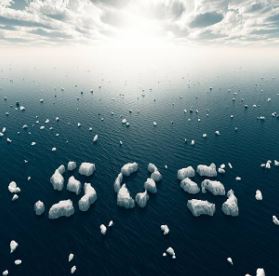Is Climate Change Real?
YES, YES, IT IS!
Yes, climate change is real. The climate is changing at a rapid pace. Carbon dioxide levels are rising; the Arctic is almost half the size it was in 1980. Even small changes, like the lack of snow this winter, are signs of a warmer Earth.
If this change continues, life on Earth will get much more dangerous. Natural disasters will get more frequent and dangerous. Heatwaves and droughts will plague some areas, while others will be flooded. The summer season will get longer, but that will be at the expense of winters. These kinds of environmental changes have always existed. Earth has gone through many cooling and heating cycles in the past million years. They were caused by shifts in the Earth’s orbit, which changed the amount of heat the Earth received from the sun. The last one came to an end around 12 thousand years ago. Most of these climate changes occurred gradually and reversed themselves in due time. The cycle occurring right now, however, is not likely to do either.
Evidence from glaciers, ancient trees, and coral reefs suggests that our current global warming is occurring ten times faster than any heating cycle before. The Earth is heating up at an alarming rate. Who caused this massive shift? Science says it’s us. The Intergovernmental Panel on Climate Change, a team of 1,300 science experts all over the globe, says that there is a 95% chance that our latest heating cycle is human-made.
For the past 800 thousand years, the amount of carbon dioxide in the atmosphere had never gone above 300 parts per million. Since 1950, it has grown to over 410 parts per million. Most of this change has been since the year 2000. Carbon dioxide is one of a large group of gases that contribute to climate change: greenhouse gases. The primary examples include water vapor, methane, and carbon dioxide. Greenhouse gases such as carbon dioxide and methane trap heat in the atmosphere. Others, like water vapor, react to atmospheric changes and are known as “feedbacks.” These “feedbacks” have effects on our precipitation and sea levels. These gases have seen an increase in recent years. If climate change is so disastrous, what can we do about it? Even cutting all carbon emissions at this very moment would not stop global warming for decades to come. The planet needs time to take a considerable amount of carbon dioxide out of the atmosphere. In the meantime, NASA provides a two-step approach to climate change: mitigation—reducing the number of greenhouse gases we put into the atmosphere—and adaption—adapting to the climate changes already in action.
So bike instead of drive, reuse that water bottle, and deal with it.
Site Editor: Holly Shaftel, Managing Editor: Randal Jackson, Science Editor: Susan Callery, Science Editor: Daniel Bailey. “Global Climate Change.” https://climate.nasa.gov/, Earth Science Communications Team at NASA’s Jet Propulsion Laboratory | California Institute of Technology, 28 Feb. 2020, www.gettyimages.com/detail/photo/global-warming-royalty-free-image/184835467?adppopup=true.


